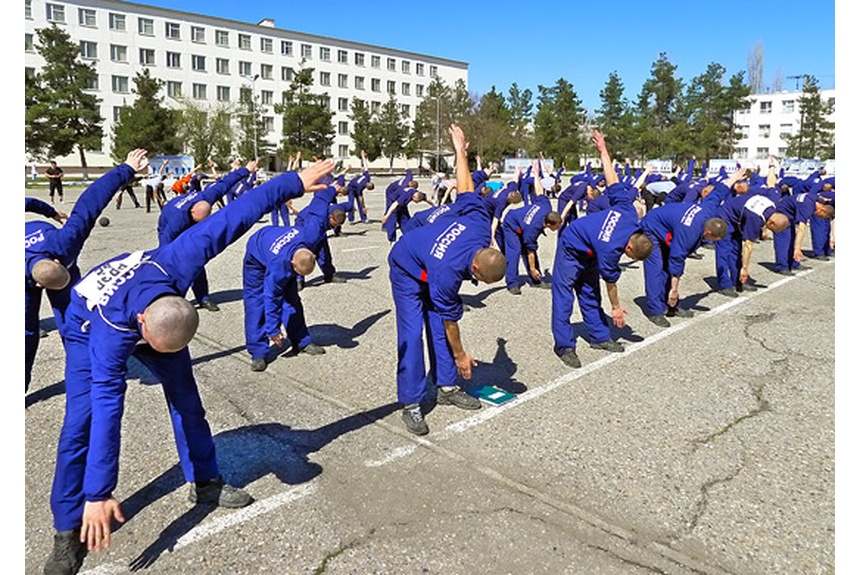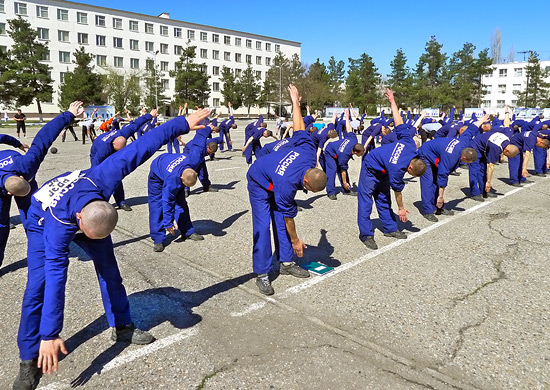
Russia Strengthens Its Military Presence in Central Asia
By Matthew Stein
Russia’s military bases in Central Asia have always been important to its strategic goals in the region, particularly for dealing with potential instability in Afghanistan. While the Russian government initially accepted U.S. airbases in Uzbekistan and Kyrgyzstan beginning in 2001 to support operations in Afghanistan, it later pressed both governments to evict U.S. forces.

201st Military Base.
“Russia decided to increase the readiness of its military bases in Kyrgyzstan and Tajikistan because of “US attempts to restore its military presence in Central Asia.”
Russia’s military bases in Central Asia have always been important to its strategic goals in the region, particularly for dealing with potential instability in Afghanistan. While the Russian government initially accepted U.S. airbases in Uzbekistan and Kyrgyzstan beginning in 2001 to support operations in Afghanistan, it later pressed both governments to evict U.S. forces. The United States left the Kharshi-Khanbad airbase (known as K2) in Uzbekistan in 2005[i] and left the Transit Center at Manas in Kyrgyzstan in 2014. Russian officials have claimed that U.S. security cooperation with Central Asian states in the 2000s took place as part of an effort to establish permanent military bases in the region, though the United States has not used a regional military facility since it left Manas.
The accompanying excerpted article from Kyrgyzstan’s independent news website Kloop reports on a statement by Russian Defense Minister Sergey Shoigu at a meeting of the Shanghai Cooperation Organization (SCO) on 28 April 2023 in New Delhi, India about increasing the combat readiness of Russian bases in Kyrgyzstan and Tajikistan. Shoigu noted that Russia made this decision to increase combat readiness because the United States is trying “to restore its military presence in Central Asia…under the pretext of helping in the fight against terrorism.” However, the article also notes that Shoigu did not offer facts to substantiate this this claim. When Russian officials announced measures to strengthen its military bases in Central Asia in the past, they noted specific increases in capabilities, like the transfer of S-300 [RG1] air defense systems to Tajikistan in 2019.[ii] Shoigu also stated that requests from members of the SCO to host military facilities is a “direct threat to stability in the SCO space.” Shoigu did not mention which SCO member would potentially host the U.S. military, but SCO members in Central Asia include Kazakhstan, Kyrgyzstan, and Tajikistan. There have been no reports that any of the three have been negotiating to host U.S. forces, but Shoigu is warning fellow SCO members that Russia will consider hosting the United States as a threat. The article also usefully provides a reminder of the current Russian military bases in Central Asia. These include the Kant airbase outside Bishkek, Kyrgyzstan, and the 201st Russian military base, home of the 201st Motor Rifle Division, in Tajikistan, the latter of which is Russia’s largest military facility outside its borders. The article ends by noting that Ukraine claimed it destroyed a tactical group from the 201st military base last year, though this has not been verified. While Russia claims it is strengthening its bases in Central Asia as a measure to maintain its presence in the region, without any specific information on how this will take place, it is possible that Russia is doing this to replace losses of the of the 201st in Tajikistan suffered in Ukraine.
Source:
Munduzbek Kalykov, “Шойгу: Россия повышает боеготовность своих военных баз в Кыргызстане и Таджикистане (Shoigu: Russia will increase the combat readiness of its military bases in Kyrgyzstan and Tajikistan),” Kloop (an independent Russian-language news website in Kyrgyzstan), 29 April 2023. https://kloop.kg/blog/2023/04/29/shojgu-rossiya-povyshaet-boegotovnost-svoih-voennyh-baz-v-kyrgyzstane-i-tadzhikistane/
Russia decided to increase the readiness of its military bases in Kyrgyzstan and Tajikistan because of “US attempts to restore its military presence in Central Asia.” This was stated by Russian Defense Minister Sergei Shoigu as reported by RIA Novosti.
According to Shoigu, “the United States and its allies, under the pretext of helping in the fight against terrorism, are trying to restore their military presence in Central Asia.” However, he did not provide specific facts.
“We regard requests to the countries of the region to deploy military infrastructure as a direct threat to stability in the SCO space…” Shoigu said on April 28 at meeting of defense ministers of the SCO member states in New Delhi.
A Russian military base has existed in Kyrgyzstan since the early 2000s. Its main forces are located in the small town of Kant, not far from Bishkek – these are Su-25 [RG1] attack aircraft and Mi-8 [RG2] helicopters. The Russian joint military base also includes a test site at Issyk-Kul, where Russian sailors test underwater torpedoes.
The 201st Russian military base is located in Tajikistan, and the garrison is deployed in the cities of Dushanbe and Bokhtar. This is Russia’s largest military facility outside its borders. The base includes motorized rifle artillery, reconnaissance, anti-aircraft missile and other units, as well as an air group……in mid-April 2022, the Ukrainian army announced the destruction of the tactical group of the 201st Russian military base, which has a permanent deployment in Tajikistan…
Notes:
[i] The withdrawal of U.S. forces from K2 cannot be solely attributed to Russian pressure. In May 2005, the Uzbek military forcefully put down public demonstrations in the Ferghana Valley, killing numerous civilians and drawing the ire of the Bush administration regarding human rights. This began a diplomatic row between the United States and Uzbekistan, which resulted in an Uzbekistani demand that the United States leave the base within six months, eventually withdrawing from K2 in November 2005.
[ii] For more background on Russia’s transfers of S-300s to Tajikistan, see: Matthew Stein “Russia Transfers S-300s to Tajikistan,” OE Watch, December 2019. https://community.apan.org/wg/tradoc-g2/fmso/p/oe-watch-issues
Image Information:
Image: 201st Military Base.
Source: https://commons.wikimedia.org/wiki/File:201_military_base_09.jpg
Attribution: CCA 4.0
Distribution A: Approved for public release
Categories:
Tags:







